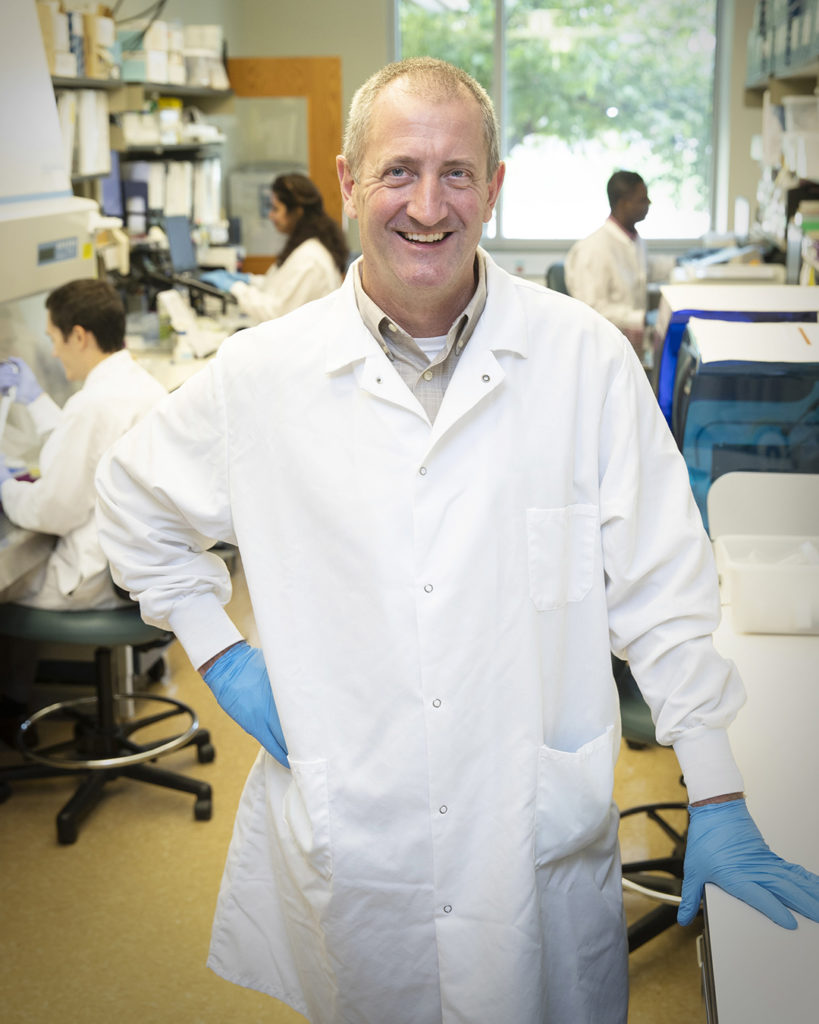CVMBS Professor Helps Develop WHO Tricycle Protocol To Monitor Antibiotic Resistance
Story by Margaret Preigh, CVMBS Communications

Through an international, multi-institutional effort coordinated by the World Health Organization (WHO), Dr. H. Morgan Scott, a professor of veterinary pathobiology in the Texas A&M College of Veterinary Medicine & Biomedical Sciences (CVMBS), helped develop the Tricycle protocol for global One Health surveillance of antimicrobial resistance.
This surveillance method is based on estimating the prevalence of enteric bacteria called Extended Spectrum Beta-Lactamase producing E. coli (ESBL E. coli) that are sometimes found in the human body, food animal populations, and the environment. By measuring yearly how much of this bacterial indicator of antimicrobial resistance (AMR) is present in these three areas under strictly controlled conditions, researchers can assess and track at a global level the changing status of antimicrobial resistance using statistical analyses.
ESBL E. coli can produce at least one of a class of enzymes called extended spectrum beta-lactamases that make the bacteria harder to treat with older and newer classes of beta-lactam antibiotics because these enzymes confer resistance to such drugs. ESBL E. coli were chosen for this WHO project specifically because they are associated with an increased risk for severe morbidity and mortality in humans, are found globally at varying rates between countries, and can readily cross barriers between humans, animals, and the environment.
“As the name suggests (Tricycle) the protocol is purposely designed to be very simple and focused initially only on ESBL E. coli. However, in its simplicity lies an inherent capacity to be expanded into larger sample populations and then to additional bacteria and resistance types,” Scott said. “This is likely the very first truly One Health AMR monitoring protocol issued by the World Health Organization, though I have earlier assisted them in drafting guidance on the design and implementation of monitoring and surveillance more generally.”
Antimicrobial resistance is a global and growing problem in which harmful microbes have acquired the means to overcome the drugs we use to fight them. This not only threatens human health, by reducing the number of tools we have to fight certain infections, but also threatens the food supply when these bacteria colonize food animals. According to the U.S. Centers for Disease Control and Prevention (CDC), the annual cost of infections caused by antibiotic-resistant bacteria is estimated to be between $4-5 billion.
“It is important to monitor antimicrobial resistance among both pathogenic and commensal bacteria in order to observe the emergence, propagation and spread of any potential threats to human and animal health,” Scott said.
The Tricycle protocol represents a genuine One Health effort, as it enables comparing the prevalence of ESBL-producing E. coli in humans, animals, and the environment between different countries.
This protocol also enables countries to begin to implement a National Integrated Surveillance System on antimicrobial resistance. The WHO advocates the adoption of National Actions Plans (NAPs) through their regional and country offices. This “three-wheeled” approach can readily be extended to other subsectors and provinces.
ESBL-producing E. coli have been chosen as the single indicator of antimicrobial resistance to increase this approach’s simplicity and efficiency.
“Bacteria and resistance know no international boundaries. They move freely across the globe in human and animal intestinal tracts and through the environment such as with migrating birds,” Scott said.
Much effort has been directed to capacity building in the human sector through the WHO Global Antimicrobial and Use Surveillance System (GLASS) and on integrated surveillance of antimicrobial resistance in the food chain under the WHO Advisory Group on Integrated Surveillance (AGISAR). The Food and Agriculture Organization of the United Nations (FAO) and the World Organization for Animal Health (OIE) have supported many countries to increase surveillance capacities. The Tricycle protocol extends to non-human sectors and is closely tied to WHO GLASS.
“While monitoring of antimicrobial resistance can be relatively simple to implement it also is critically important for establishing the status of the bacterial populations that give rise to infections that might require treatment,” Scott said. “Knowledge is power, whether it be for allocating public health resources and prioritizing policies or for making clinical decisions regarding treatment in human or animal patients.”
###
For more information about the Texas A&M College of Veterinary Medicine & Biomedical Sciences, please visit our website at vetmed.tamu.edu or join us on Facebook, Instagram, and Twitter.
Contact Information: Jennifer Gauntt, Director of VMBS Communications, Texas A&M College of Veterinary Medicine & Biomedical Sciences, jgauntt@cvm.tamu.edu, 979-862-4216


